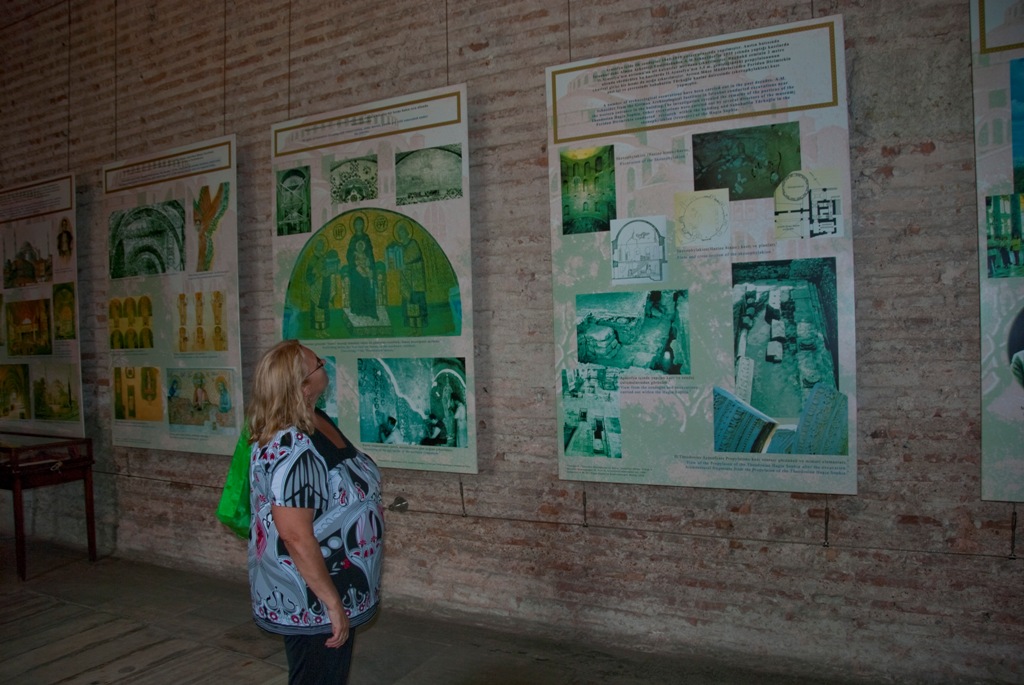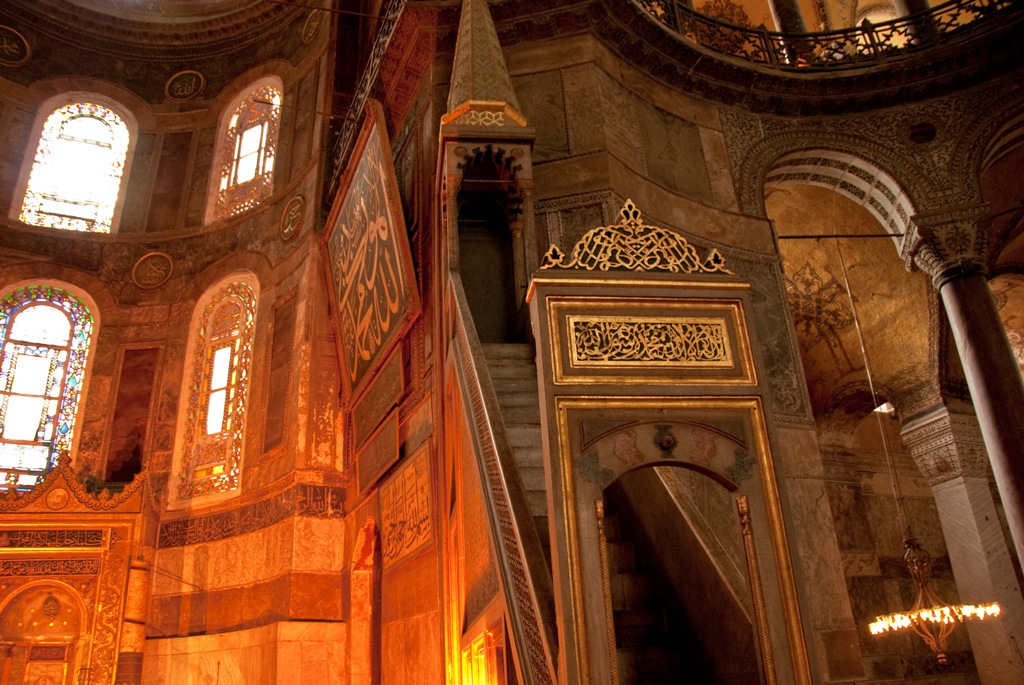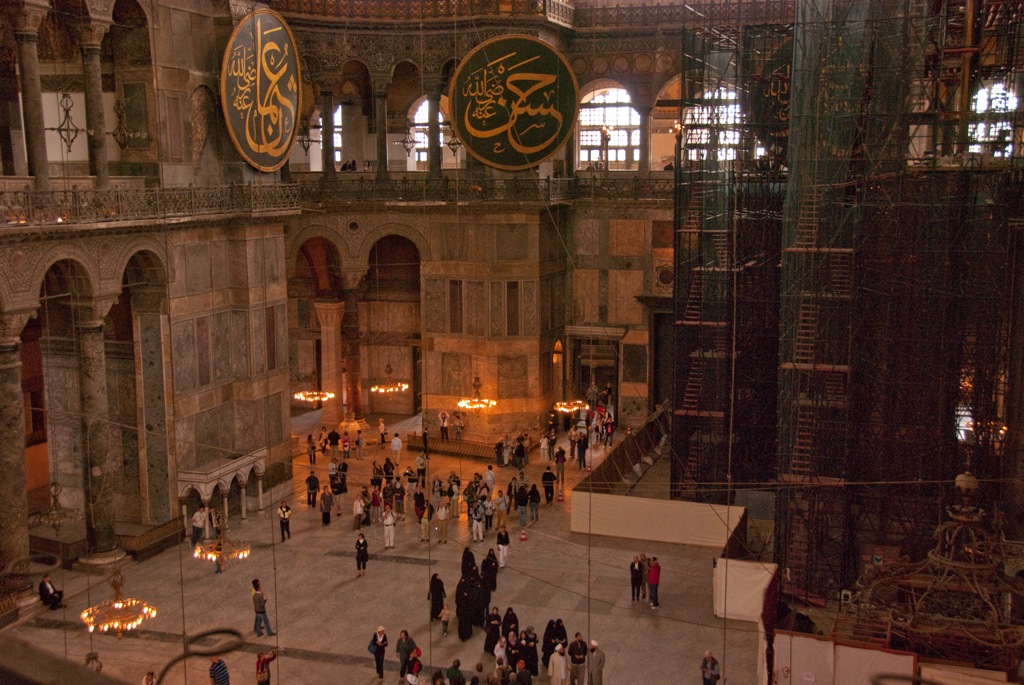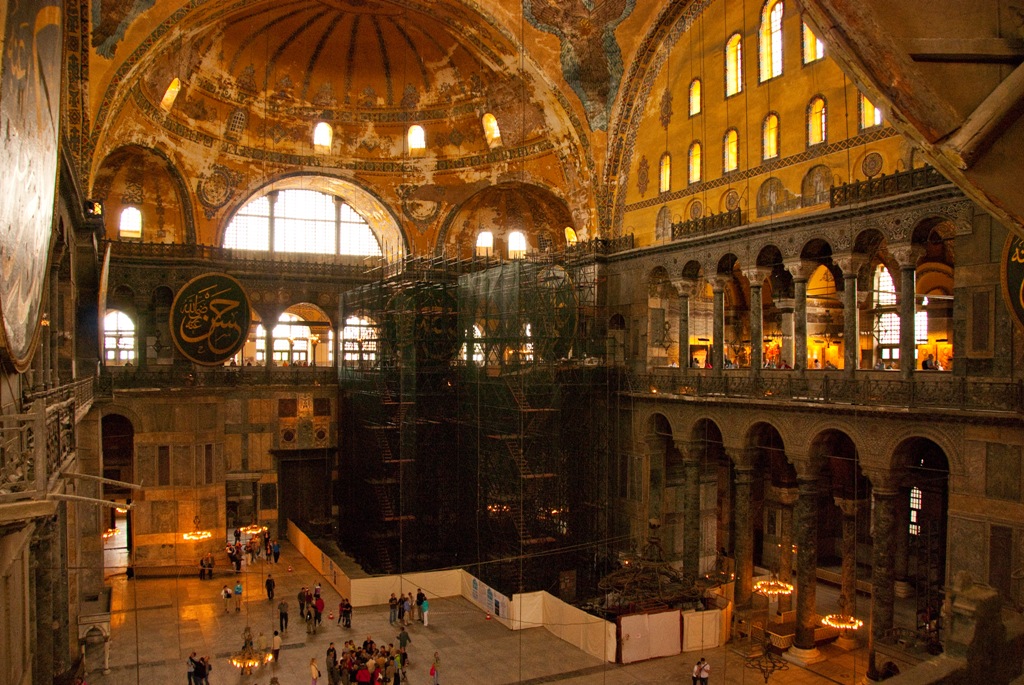The Hagia Sophia, whose name means “holy wisdom,” is a domed monument originally built as a cathedral in Constantinople (now Istanbul, Turkey) in the sixth century A.D. Another chapter in the Hagia Sophia’s life began in 1453. In that year the Byzantine Empire ended, with Constantinople falling to the armies of Mehmed II, sultan of the Ottoman Empire.


































Inside Hagia Sophia, there’s a column where tourists perform an unusual ritual. They make a wish and stick a thumb into a hole within the structure, then attempt to rotate the finger in a perfect circle. Supposedly, if their finger gets wet, it means their wish will be fulfilled or their illnesses will be healed. The column is known as the “wishing column” or the “perspiring column.” The modest pole would go unnoticed, if not for the crowds of people attempting to jam their fingers into its small orifice.
The column is known to be damp to the touch, probably as a result of moisture that gathers on its surface. But according to local legend, its wetness comes from more legendary sources. The most popular legend says that the column has been exuding some sort of healing liquid since Saint Gregory the Miracle Worker appeared near it in the year 1200. Some say that it “cries” because of a sultan’s pity.
The weirdly wet column and its legendary powers prompted someone to shield the column with protective bronze plates. But this wasn’t enough to stop the pilgrims seeking an answer for their ailments. They managed to break through the protective layer, allowing people to continue accessing the healing hole.








Click here to go back to 2010 Turkey